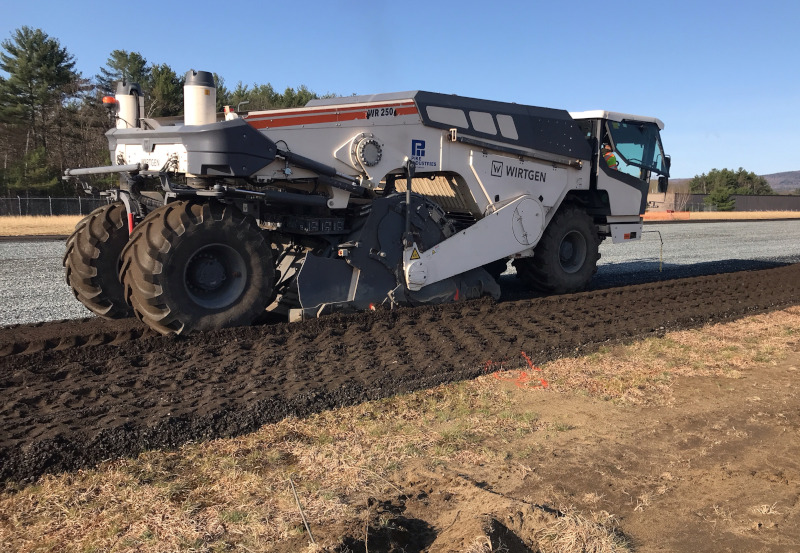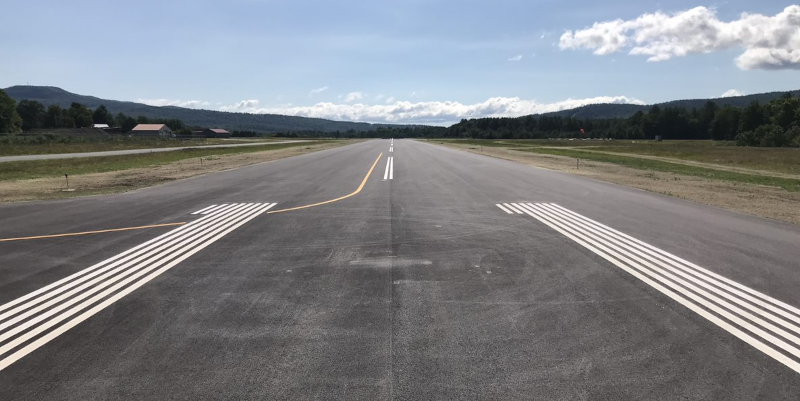Claremont Municipal Airport
excellence in flight
Soaring like a bird over the Granite State
By THOMAS LARK
Associate Editor
CLAREMONT, N.H.––Dec. 17 will mark 120 years since the Wright Brothers’ famous flight at Kitty Hawk, N.C.
And 664 miles north of that Outer Banks community is the charming city of Claremont in Sullivan County, N.H. This municipality of some 13,000 folks has also made its mark upon aviation history with the Claremont Municipal Airport. The CMA was the second such airport to open in the state of New Hampshire, just 24 years after Orville and Wilbur made history, according to Granite State aviation historian Philip Pendleton.
The Claremont Municipal Airport is a public-use facility a mile west of the city’s main business district. This general aviation airport is publicly owned by the City of Claremont and managed by the city. The nearest airport with scheduled airline service is Lebanon Municipal Airport, just down the road a half-hour or so in Grafton County, N.H.
According to the FAA, the Claremont Municipal Airport covers an area of 120 acres at an elevation of 545 feet above sea level. It has one asphalt-paved runway that is 75 feet wide and more than half a mile in length.
The CMA operates 24 hours a day, 365 days a year. It features a new 1,900-square-foot terminal building for the aviation public. It offers two pilot offices; a pilots’ briefing room and lounge; handicapped-accessible restrooms and showers; and such amenities as a kitchenette, free Internet access, a computer for pilots’ use and an Internet-based weather station; and 24-hour fuel access.
Former fire chief Bryan Burr manages the airport. We recently spoke with him about what’s making the CMA truly take off these days.
“Claremont is kind of a unique community,” Burr observed. “We’re industrial––blue-collar, specifically, if you will.”
Airports are always big financial drivers. They’re the gateways to the cities they serve. You might say that they propel local economies and can make or break them. A city’s economy and related economic development can fly (or fall), based upon a local airport bringing in faraway business leaders, investors and new industries.
Burr continued that as the 19th century gave way to the 20th, the community metamorphosed from a textile mills-based economy to one based upon machinery. Eventually, the deep recession of the 1970’s had a most deleterious effect upon Claremont and countless other such American communities. By the early 1980’s, the machine-tool industry was more and more dominated by overseas competitors, until before long, they outright took it over, Burr informed.
“We had a lot of lost jobs in the community, back in the ’80’s, from the machine-tool industry,” he said, “so we became more of a service-oriented community and more retail and such.”

But these days, the machine-tool industry has seen something of a local and regional comeback, he added, albeit on a smaller scale.
Re the airport specifically, there’s good news on the horizon. By the end of this year, said Burr, the CMA will see about $7 million in improvements. Ninety percent of this will be funded by the FAA, he added, and five percent will come from the New Hampshire Department of Transportation Bureau of Aeronautics. And there will also be a five percent local match.
“Because we do generate some income at the airport,” Burr informed, explaining that the CMA is home to two commercial properties that add to the tax base because of the land they lease.
In addition, there are both privately-maintained and leased hangar spaces. And there’s a small aviation repair-and-inspection business, Ascutney Aviation, owned and operated by Stephen Keen and also located on CMA property.
More about Burr and the CMA
A native Claremonter, born and bred, Burr got into the fire service in 1988. He spent more than three decades as a full-time firefighter. In 2018, he became a fire department chief, and he also took on the role of being the CMA’s manager.
“Which is a unique position,” he added.
Burr recently retired from the fire service. But for a time, he revealed, he was the only person to combine the duties of a fire chief with those of an airport manager in the Granite State.
“And probably all of New England, for that matter!” he continued with a hearty chuckle.
It meant juggling two very different balls. Managing a 26-member fire department; handling training for fire prevention and suppression; medical training for paramedics and first-responder personnel; caring for multiple fire-and-rescue apparatuses; and many more responsibilities would all combine into one big challenge for anyone.
“It makes for a full plate,” said Burr.
Then came the new ball: managing the airport. Burr hit the ground running. The first big project to tackle was the demolition of the old terminal and the construction of a new version. That eventually became multiple projects at multiple times, as he recalled.

“Juggling both is a feat in itself,” he said of the fire department and airport. “You just have to take one task at a time and work through it, knowing there are hiccoughs in every project and business venture. You just try to solve the problems and try not to create new ones.”
Running the airport requires a close eye on all the pieces of the puzzle, as Burr observed. And many people labor behind the scenes to make it all come together into one big picture.
Last year, a $3 million project came to fruition. Burr said the runway was resurfaced, and its lighting was replaced.
“It’s the latest technology in LED (light-emitting diode) lighting,” he added.
Plus, the drainage system, much of it dating to the 1940’s, was replaced.
And thanks to a grant from the FAA some 30 years ago, the entire airport was fenced off, as Burr revealed. Such measures help decrease the likelihood of wildlife getting on to the property and its runway. Entry to the airport is via a secure code, and entrants must know it in order to get in, as Burr explained.
“Very few people have access to the facility,” he said. “Pilots, in general, do. They come and go. The facility is monitored with a security camera system. In fact, the airport probably has the best camera system installed in the whole city. It has infra-red tracking, so we do monitor everything, and we know who’s coming and who’s going.”
Flying into history
According to Pendleton, the first documented airplane flight in New Hampshire took place on June 19, 1911, when Harry Atwood flew his Burgess-Wright biplane from Waltham, Mass., following the course of the Merrimack River as far as Concord in one day. The first instance of aircraft ownership in New Hampshire came with Robert Fogg’s acquisition of a Curtis biplane in Toronto in 1920. A talented aviator with an appropriately Dickensian surname (or perhaps Jules Verne) suiting his profession, Fogg then flew overland to Concord “without a compass or guide other than the sun.”
Pendleton continues that limited delivery of air mail began in New Hampshire with the circuit route that Fogg established at Lake Winnipesaukee in the summer of 1923. Theatre-goers will recollect that playwright Thornton Wilder mentions this beautiful lake, the largest in the Granite State, in his immortal classic about small-town New Hampshire life in the better days of the 1890’s and early 1900’s, Our Town.
Fogg flew a seaplane around the lake to deliver the post to the many businessmen enjoying local hotels and cabins. American commercial aviation developed quickly in the years immediately following the Great War. And Fogg found himself hailed as New Hampshire’s “prince of aviators” for his regional role in these efforts.
Northeast Airways was New Hampshire’s first commercial aviation firm to offer charter passenger service, beginning in 1928. But the Great Depression dealt a death blow to this ambitious effort in 1933. However, the bad times couldn’t last, and things inevitably improved. The number of New Hampshire’s licensed pilots increased after World War II. By 1949, the Granite State was home to 243 registered aircraft and some 650 registered pilots. There were by then 12 public airports in the state. And by 1952, Berlin, Concord, Laconia, Keene and Lebanon were all receiving regular, scheduled airliner service.
Up, up and away
When the Claremont Airport opened in 1927, no one could’ve envisioned it would eventually become what it is today.
As Pendleton writes, it was all down to the vision, inspiration and hard work of Claremont’s earlier town fathers. They took advantage of the Roaring Twenties’ economic boom to bring home rewards for what was then their little town. They saw bright opportunities and shining horizons, and they wanted Claremont to be a part of this.
Today, aviation is big business in New Hampshire. According to the state government, the total economic contribution of aviation in the Granite State is estimated at 12,954 jobs and $2.16 billion in annual revenues for businesses statewide.
AT A GLANCE
Claremont Municipal Airport (or CMA)
Where: Claremont, New Hampshire
Website: www.claremontnh.com
PREFERRED VENDORS
Whelen Engineering Company, Inc. – www.whelen.com
Whelen Engineering—a global leader in the emergency warning industry—has been manufacturing in America since 1952, proudly marking its 70th anniversary in 2022. Whelen designs and manufactures reliable and powerful warning lights, white illumination lighting, sirens, controllers, and high-powered warning systems for Automotive, Aviation (Whelen Aerospace Technologies – WAT), and Mass Notification industries worldwide.
Stantec – www.stantec.com
We care about the communities we serve—because they’re our communities too. We’re designers, engineers, scientists, and project managers, innovating together at the intersection of community, creativity, and client relationships. Balancing these priorities results in projects that advance the quality of life in communities across the globe.





